Thousands of Rwandans and friends of Rwanda retraced the painful footsteps of Genocide victims on the afternoon of Friday, May 11, 2025, during the annual “Walk to Remember,” honoring those who were massacred at Nyanza-Kicukiro during the 1994 Genocide against the Tutsi.
The 4-kilometer walk led participants from the present-day IPRC Kigali campus (formerly Ecole Technique Officielle, or ETO) to the Nyanza Genocide Memorial — a route once walked by nearly 3,000 Tutsi refugees before their systematic killing 31 years ago.
This walk holds particular significance in Rwanda’s commemoration activities, marking one of the Genocide’s most symbolic and tragic episodes. On April 11, 1994, Belgian UN peacekeepers withdrew from ETO, abandoning thousands of Tutsis who had sought refuge there. Within hours, Interahamwe militia and soldiers from the former Rwandan Armed Forces surrounded the area and forced the refugees to march to Nyanza hill, where most were brutally killed.
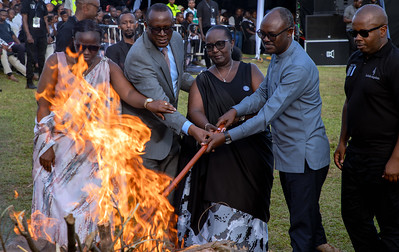
“Today, in a special way, we remember the Genocide against the Tutsi that was planned and executed while the United Nations knew about it but decided to leave those who were being killed,” said the President of the Supreme Court, Rt Hon. Domitilla Mukantanganzwa. “Their voice is a remembrance to us. Their bravery gives us strength, and remembering them reminds us never to return to the darkness.”
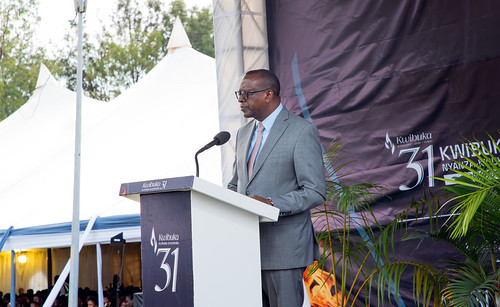
Minister of Unity and Civic Engagement (MINUBUMWE), Dr Bizimana Jean Damascene emphasized the need not to trust Foreign countries
Unlike many commemoration events, the Walk to Remember is uniquely physical. Participants experience the very distance and terrain that exhausted victims once walked under threat and fear. For many young people born after 1994, this journey creates a powerful emotional connection to a past they did not witness.
“The Walk to Remember gives us time to reflect on the painful journey our parents and loved ones went through—simply because of who they were. It’s a reminder of the path of suffering they endured while the world watched in silence,” said Rene Byiringiro, a Mount Kigali University student who participated in the walk to remember.
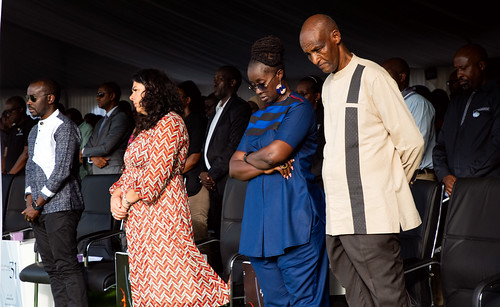
“Countries like Belgium, the United Nations, and other international organizations failed to protect innocent lives. As we walk, we remember the injustice, we commit ourselves to building a world where genocide is not only remembered, but never happens again,” Rene emphasized.
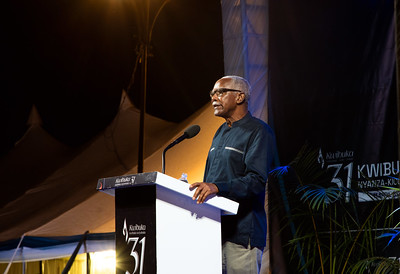
The remembrance ceremony began after the walk with a minute of silence for the victims. The event featured a testimony by Venuste Karasira, a survivor of the massacre, musical performances by artists Joe Musinga and Grace Mukankusi, and a public dialogue led by the Minister of National Unity and Civic Engagement, Dr. Bizimana Jean Damascene. The discussion was held under the theme: “The 1994 Genocide Against the Tutsi: A Lesson for Rwandans, Foreign Nations, and the Region.”
“What should we learn from history? We should not trust foreign countries. They focus on their benefits, not our well-being,” Minister Bizimana said. “If that were not the case, they wouldn’t be supporting the FDLR today.”
Kigali City Mayor, Samuel Dusengiyumva, echoed a quote from President Paul Kagame during the launch of the 31st commemoration on April 7, 2025:
“I can’t beg to live. I can’t beg anybody. I will fight. If I lose, I lose. But there’s a significant chance that if you stand up and fight, you will live. And you will have lived a dignified life — a life you deserve, a life everyone deserves.”
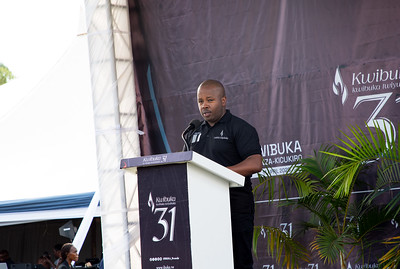
Mayor of Kigali City Samuel Dusengiyumva delivering a welcome note after the walk to remember
The annual walk is organized by Ibuka, in partnership with the City of Kigali, as a way to remember the victims and underscore the failure of the international community to intervene during the Genocide against the Tutsi.
“I thank everyone that has gathered here today. When we see you, we see hope for the future — a future grounded in our painful past and remembrance,” said Philbert Gakwenzire, president of Ibuka, an umbrella organization of genocide survivors.
The Nyanza-Kicukiro Memorial, where more than 100,000 victims are laid to rest, has become a central stop in the Walk to Remember. Every year during Kwibuka, government officials, survivors, and citizens gather to lay wreaths, reflect, and recommit to fighting genocide ideology while building a united Rwanda.
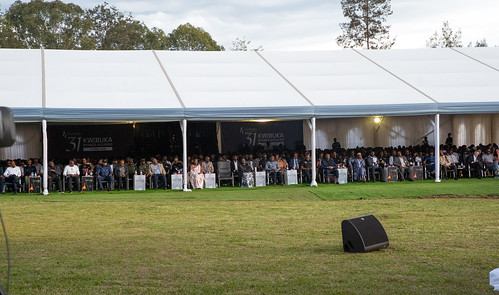
This memorial stands among Rwanda’s most important genocide sites, alongside others like the Kigali Genocide Memorial in Gisozi, Murambi, and Ntarama — all of which preserve memory while contributing to education, healing, and reconciliation.
As Rwanda continues its 100-day commemoration period, events like this walk reaffirm the country’s enduring commitment to remembrance — and to building a future free from genocide ideology.
Photos by Manzi Titus





